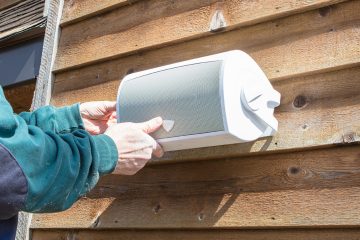Proper care and maintenance of dakimakura body pillows are essential to ensure their longevity and comfort. These large, often intricately designed pillows require specific cleaning and handling techniques to keep them in pristine condition. This article provides a comprehensive guide on how to care for and maintain your dakimakura, ensuring it remains a cherished item for years to come.
Cleaning the Dakimakura Cover
The cover of a dakimakura, typically made from materials like polyester or cotton, is designed to be removable and washable. Regular cleaning of the cover is crucial to maintain hygiene and preserve the quality of the artwork.
Machine Washing
Most dakimakura covers are machine washable, but it’s important to follow the care instructions provided by the manufacturer. Generally, it is recommended to wash the cover in cold water on a gentle cycle to prevent damage to the fabric and printed design. Using a mild detergent will help avoid fading or discoloration of the artwork.
Before washing, turn the cover inside out to protect the printed side. Avoid using bleach or harsh chemicals, as these can damage the fabric and artwork. Once washed, air drying is preferable to machine drying to prevent shrinkage and maintain the integrity of the cover.
Hand Washing
For delicate covers or those with intricate designs, hand washing may be the safer option. Fill a basin with cold water and add a small amount of mild detergent. Gently agitate the water to create suds, then immerse the cover and gently rub it to remove dirt and stains.
Rinse thoroughly with cold water to remove any soap residue. Squeeze out excess water without wringing or twisting the fabric, as this can cause stretching or damage. Lay the cover flat on a clean towel to air dry, avoiding direct sunlight to prevent fading.
Cleaning the Pillow Insert
The pillow insert, typically filled with materials like polyester fiberfill or memory foam, also requires regular cleaning to maintain its shape and comfort. However, cleaning the insert can be more challenging due to its size and filling material.
Spot Cleaning
For minor stains or spills, spot cleaning is often sufficient. Use a clean, damp cloth and a mild detergent to gently blot the affected area. Avoid soaking the pillow, as excessive moisture can damage the filling and lead to mold or mildew growth. After cleaning, allow the insert to air dry completely before putting the cover back on.
Full Cleaning
If a full cleaning is necessary, check the manufacturer’s instructions to determine if the insert is machine washable. If it is, use a large-capacity washing machine and wash on a gentle cycle with cold water. Use a mild detergent and avoid bleach or harsh chemicals.
If the insert is not machine washable, consider professional cleaning services that specialize in large pillows or stuffed items. This ensures a thorough cleaning without risking damage to the pillow.
Storing Dakimakura
Proper storage of dakimakura is important to prevent damage and maintain their shape and quality. When not in use, store the dakimakura in a clean, dry place away from direct sunlight and extreme temperatures.
Using Storage Bags
Storage bags designed for large pillows or bedding are ideal for storing dakimakura. These bags protect the pillow from dust, dirt, and moisture, helping to preserve its condition. Vacuum-sealed storage bags can also save space and keep the pillow compressed, but be cautious not to over-compress, as this can affect the shape and filling.
Regular Rotation
If you have multiple dakimakura covers, rotating them regularly can help prevent wear and tear on a single cover. This also allows you to showcase different designs and keep your collection fresh and exciting. Store unused covers in a clean, dry place, preferably in a protective storage bag to prevent dust and damage.
Preserving the Artwork
The artwork on dakimakura covers is often a key reason for their appeal, making it important to preserve the design’s quality and vibrancy.
Avoiding Direct Sunlight
Exposure to direct sunlight can cause the colors on dakimakura covers to fade over time. To preserve the artwork, avoid placing the pillow in areas with prolonged sun exposure. If the dakimakura is used as a decorative piece, consider rotating its position to minimize sun exposure on any one side.
Using Fabric Protectors
Fabric protectors designed for printed fabrics can help safeguard the artwork on dakimakura covers. These sprays create a protective barrier that can repel dirt, stains, and moisture without affecting the fabric’s breathability. Follow the manufacturer’s instructions for application and reapply as needed to maintain protection.
Conclusion
Proper care and maintenance of dakimakura body pillows are essential to ensure their longevity and preserve their quality. By following the appropriate cleaning techniques for both the cover and insert, storing the pillow correctly, and taking steps to protect the artwork, you can enjoy your dakimakura for many years. Understanding the specific care requirements of these unique pillows helps maintain their comfort and aesthetic appeal, making them a lasting addition to your collection.
Taking the time to care for your dakimakura not only enhances its lifespan but also ensures that it continues to provide comfort and joy. Whether used for sleep, decoration, or emotional support, a well-maintained dakimakura remains a cherished possession, reflecting the owner’s personal tastes and care.



